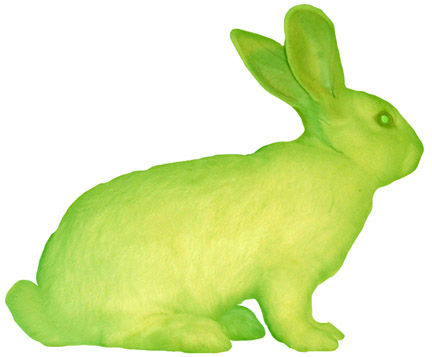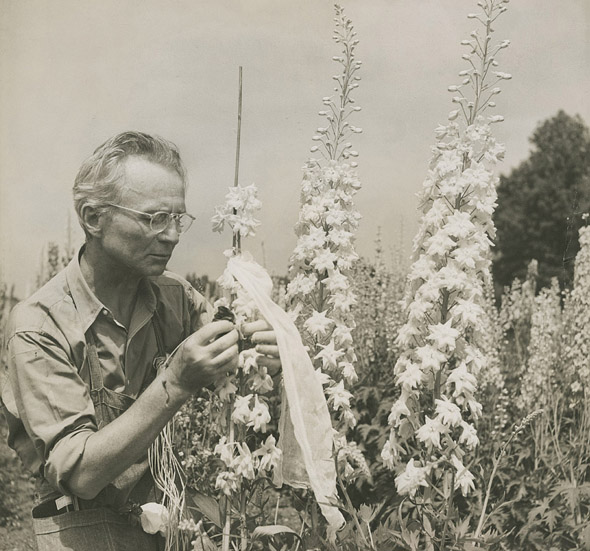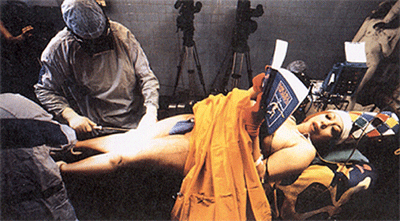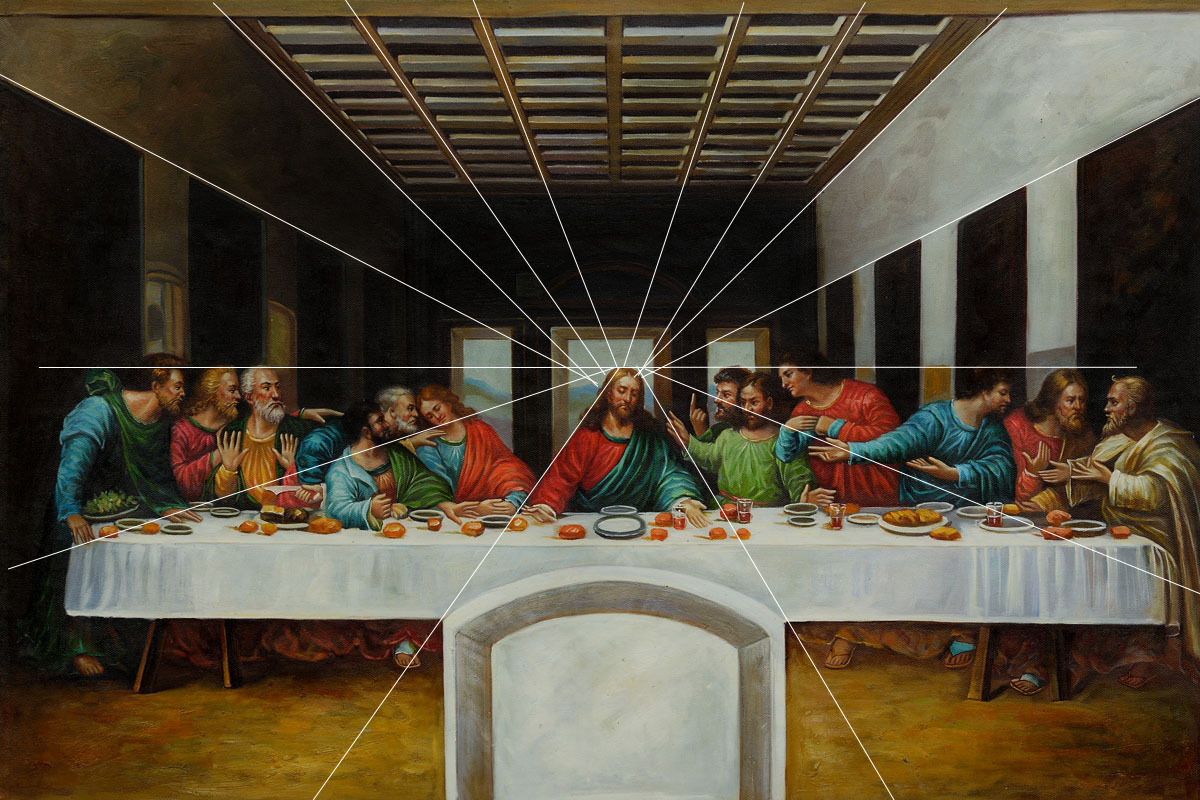Here is a link to my final project:
https://drive.google.com/file/d/0BwBpFnjRdXLpaFZ3cVlCZEVfOVk/view?usp=sharing
Wednesday, June 10, 2015
Thursday, June 4, 2015
Event 3: Getty Museum's Light, Paper, Process: Reinventing Photography
For my third event, I decided to visit the Getty Museum, one of my favorite places in Los Angeles. I have been to the Getty Museum on several occasions, as well as the Getty Villa, for past classes in the Classics department. Instead of viewing the vast collection of ancient Greek sculptures and architecture, I decided to take a look at the Reinventing Photography exhibit.
Although I have always been interested in photography, I have never studied the subject. My knowledge of the field only extends to what was taught in the Introduction to Cinematography classes on campus. The art in the exhibit really showed me how photography has come. Photography today does not necessarily have to be a single moment in time anymore, as shown by the multimedia artists contained within the exhibits.
 |
| La Brea D2AB, 2013 - Matthew Brandt |
One of my favorite pieces within the exhibit was Matthew Brandt's La Brea. He was inspired to create the series after photographing exhibits of prehistoric animals at the Page Museum. Brandt then utilized the labor-intensive heliograph process to create the piece, where metal plates are coated with a sticky, tarlike substance that hardens with exposure to sunlight. More interestingly, Brandt used actual tar from the La Brea tar pits to create the work of art. Looking at the image, you can see that Brandt intended to convey a sense of loss for creatures that no longer exist, using the fossilized skeletons of animals to represent their memory.
 |
| Lunagrams, 2010 - Lisa Oppenheim |
The other work of art I enjoyed was Lisa Oppenheim's Lunagrams #1-13. To create the series, Oppenheim borrowed glass-plate negatives depicting the moon made by John and Henry Draper in the 1850's. "She then made large-format copy negatives, placed them on photographic paper, then exposed them to the moon at the time of the lunar phase depicted in the original" (Sholis). In this piece, she shows how photography can capture durations of time using different photography techniques and new mediums. The series is as mesmerizing as it must have been for the first astronomers to study the moon's phases.
After going through this exhibit, I realized how dynamic of a field photography actually is. There is a variety of ways to bring new twists to traditional photography, such as was depicted above. Throughout the exhibit, I could see the effortless crossover between art and various fields of science, such as paleontology and astrology. Without this course, I don't think I would have been able to recognize that the interplay between different fields in each work of art.
Works Cited:
Brandt, Matthew. "Matthew Brandt." Yossimilo.com. Yossi Milo Gallery, n.d. Web. 05 June 2015. <http://www.yossimilo.com/artists/matthew-brandt/>.
"Lisa Oppenheim." Klosterfelde.de. Klosterfelde, n.d. Web. 05 June 2015. <http://cgi.klosterfelde.de/user-cgi-bin/exhibitions/?s1=previous&s2=2010&s3=Lisa_Oppenheim>.
Sholis, Brian. "Lisa Oppenheim: Elemental Process." Aperture Foundation NY. Aperture Foundation NY, n.d. Web. 05 June 2015. <http://www.aperture.org/blog/lisa-oppenheim-elemental-process/>.
Thursday, May 28, 2015
Event 2: Fowler Museum
For my second event, I decided to visit Vivan Sundaram’s Making Strange: Gagawaka + Postmortem exhibition
at the Fowler Museum. It was the first time I ever stepped inside the museum
despite having a handful of classes no more than 50 steps away from its
entrance. Needless to say, I was amazed at how big the museum actually was and
wish I took advantage of its convenient location on campus over the past few
years.
 |
| Dress made of recycled red bras |
 |
| This sculpture made of braided hair was a bit unsettling, but interesting |
When I first entered the exhibit, I was in awe of the bizarreness
of Sundaram’s sculptures. I began with Gagawaka
and made my way through half of the pieces there before finally realizing what
Sundaram meant when he titled his entire exhibit Making Strange. Each piece was made of familiar items such as red
bras, surgical masks, and braided hair; however, he made them unfamiliar by
creating unusual items of clothes with them. In a behind the scenes video,
Sundaram explains how he created each piece using recycled items to create an anti-aesthetic
effect. The Gagawaka portion of the exhibit seemed to be a satirical view of
today’s fashion.
Here is a video preview of the Making Strange exhibition for those of you who are on the fence about going to the Fowler Museum! I definitely recommend this exhibit because it is relevant to the DESMA 9 course and is extremely fascinating.
Works Cited:
"Making Strange: Gagawaka + Postmortem by Vivan Sundaram." Fowler. Fowler Museum at UCLA, n.d. Web. 29 May 2015. <http://www.fowler.ucla.edu/exhibitions/making-strange-gagawaka-postmortem-vivan-sundaram>.
Sundaram, Vivan. "Vivan Sundaram Talks about GAGAWAKA." Artforum.com. Art Forum, 20 Dec. 2011. Web. 29 May 2015. <http://artforum.com/words/id=29889>.
Sundaram, Vivan. "Vivan Sundaram's "Making Strange"" YouTube. YouTube, 20 Apr. 2015. Web. 29 May 2015. <https://www.youtube.com/watch?v=9DRX4dlBA-w>.
Week 9: Space + Art
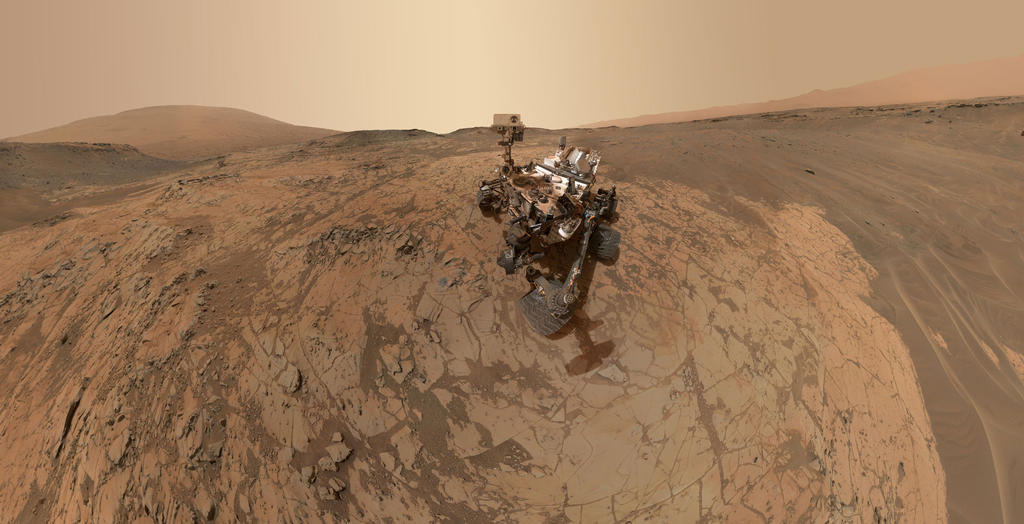 |
| Curiosity rover's self-portrait on Mars |
Over the past few weeks, the recurring theme of science and
art as overlapping disciplines has become more and more apparent with all the
new forms of technological collaboration from neuroscience and nanotechnology to
biotechnology and space. Many areas including biomedical engineering,
artificial intelligence and practically every other field within science and
technology have advanced enough to explore areas far beyond the comprehensible
boundaries of Earth. All while advancements in art have seemingly leveled off
in comparison. So is art actually getting closer to science as we have
attempted to cover throughout this quarter?
In my opinion, the answer is yes. While scientists endeavor
to understand the intricacies of the world’s structure and explore spaces never
traveled to by humanity, artists are seeking to expose the deeper implications
of such scientific advancements. From this perspective, art is not only growing
closer to science, but is also complementary and essential to the growth of
science. Just as Buckminster Fuller once said, “the further art advances the
closer it approaches science, the further science advances the closer it
approaches art” (Vesna).
"The Jetsons: Little Bundle of Trouble"
In addition to the previously studied focuses of science,
space science is a field that has made great strides over the past hundred
years. The space race between the US and USSR during the Cold War, mankind’s
first steps on the moon, and the landing of the Curiosity rover on Mars have
all sparked the imagination of the public and inspired artists to write about
the future. Pop culture shows such as “The Jetsons” and “Star Trek” influence
the way we imagine space and the future of our world to involve
extraterrestrial beings, flying cars and robots with artificial intelligence.
With much of the general populace indifferent to space exploration, space art
in its many forms plays an extremely important role in generating broader
interest towards the field across the board.
 |
| "First Steps" Mitchell Jamieson, 1963 |
"The astronomical artist will always be far ahead of the explorer. They can depict scenes that no human eye will ever see, because of their danger, or their remoteness in time and space"
-Arthur C. Clarke (NASA).
A clear example of space art is the NASA Art Program which
was started in 1962. The program was founded as an effort to “present NASA’s
discoveries and cutting-edge research to the public in a way that would be more
accessible than complex scientific reports” (NASA). This program allowed
artists to create depictions of NASA’s landmark achievements.
Works Cited:
"Curiosity Self-Portrait at 'Mojave' on Mount Sharp." Nasa.gov. NASA, 24 Feb. 2015. Web. 28 May 2015. <http://mars.nasa.gov/msl/multimedia/images/?ImageID=6976>.
"The Daily Galaxy." The Daily Galaxy. The Daily Galaxy, 23 Oct. 2013. Web. 28 May 2015. <http://www.dailygalaxy.com/my_weblog/2013/10/unknown-forces-causing-milky-way-galaxy-to-wobble.html>.
Dunbar, Brian. "The NASA Art Program." NASA.gov. NASA, 12 Apr. 2013. Web. 28 May 2015. <http://www.nasa.gov/connect/artspace/creative_works/feature-inception.html>.
Dunbar, Brian. "NASA Art Space." NASA.gov. NASA, 29 Nov. 2012. Web. 28 May 2015. <http://www.nasa.gov/connect/artspace/galleries/art_program/ArtProgramGallery.html>.
"The Jetsons: Little Bundle of Trouble." YouTube. YouTube, 12 May 2015. Web. 28 May 2015. <https://www.youtube.com/watch?v=CS8GRm2XTck>.
Vesna, Victoria. "Introduction to Buckminster Fuller." Bfi.org. Buckminster Fuller Institute, n.d. Web. 28 May 2015. <https://bfi.org/about-fuller/biography/introduction-buckminster-fuller>.
Sunday, May 24, 2015
Week 8: Nanotechnology + Art
Before this week’s lecture, I knew nothing about
nanotechnology, the field’s advancements, and its relevance in our daily lives.
As an economics major, the only time I ever walked past the California
Nanosystems Institute building was to grab lunch at the café across from it.
Now I understand that we are exposed to nanoparticles by means of the common
products we use daily. Silver nanoparticles are used in fabric because they
make clothing odor-resistant and kill bacteria and zinc oxide nanoparticles are
used in “industrial coatings to protect wood, plastic and textiles from UV ray
exposure” (Understandingnano).
Nanotechnology is especially promising in the realm of
medicine and can provide great benefits for society. Currently, nanotechnology
is being used as the basis for more effective drug delivery systems. In
processes such as chemotherapy, scientists hope to use nanoparticles to deliver
drugs directly to cancer cells. Nanoparticles are also used to absorb oxygen
free radicals and release them in less dangerous states.
Aside from the real-life applications, nanotechnology has
also made advancements in art. Paul Rothemund, a Caltech researcher, pioneered
a technique called “DNA origami” that “can weave any two-dimensional shape or
pattern using DNA molecules” (Than). Rothemund uses a single, long strand of
DNA that folds and is stapled together with short strands when heated up
automatically. Examples of his work are the smiley face and star shown above.
It is mind-blowing to think that nanotechnology allows us to play with the
building blocks of life. Simple changes in our genetic coding could have led us
to be dogs or gorillas, yet here Rothemund is able to manipulate it to create
art (Rothemund).
Another example of nanotechnology and art colliding is Shawn
Douglas’s transformation of DNA into a molecular equivalent of sculptor’s clay
(Yong). He uses DNA strands to form sculptures 20 to 40 nanometers in size. He
begins with a computer using series of single DNA helixes and removes sections
until he is satisfied with the design. Douglas has designed a monolith, railed
bridge, square nut, and much more. Douglas’ work is an extension of Rothemund’s
DNA origami.
 |
| "Plasticity in Steel Micro-Pillars" Siddhardtha Pathak |
Nanoartist Cris Orfescu is known for creating the NanoArt
Exhibition which provides viewers with glimpses into nano-size landscapes that
have been colorized using digital photography software (Discovery).
Works Cited:
"Nanotechnology and You – Your Future Might Be Very,
Very Tiny." OmniNano.com. OmniNano, n.d. Web. 24 May 2015.
<http://www.omninano.org/nano/our-future-and-nanotech>.
"Nanoparticle Applications and Uses ."
UnderstandingNano.com. UnderstandingNano, n.d. Web. 24 May 2015.
<http://www.understandingnano.com/nanoparticles.html>.
Rothemund, Paul. "DNA Folding, in Detail." Paul
Rothemund:The Astonishing Promise of DNA Folding. TED, 4 Sept. 2008. Web. 24
May 2015.
<http://www.ted.com/talks/paul_rothemund_details_dna_folding#t-541540>.
Siddartha, Pathak. "Extraordinary Beauty of the NanoArt
World: Photos : DNews." DNews. N.p., 12 Dec. 2012. Web.
<http://news.discovery.com/tech/scientists-artists-nanoart-exhibition-111109.htm>.
Than, Ker. "DNA Art: Origami Goes Nano."
LiveScience. TechMedia Network, 15 Mar. 2006. Web. 24 May 2015.
<http://www.livescience.com/634-dna-art-origami-nano.html>.
Yong, Ed. "DNA Sculpture and Origami – a Meeting of Art
and Nanotechnology." Science Blogs: Not
Exactly Rocket Science. N.p.,
20 May 2009. Web.
<http://scienceblogs.com/notrocketscience/2009/05/20/dna-sculpture-and-origami-a-meeting-of-art-and-nanotechnol/>.
Sunday, May 17, 2015
Week 7: Neuroscience + Art
While reading Neuroculture by Giovanni Frazzetto and
Suzanne Anker, I was intrigued by the product of neuroculture known as
neuroaesthetics. Neuroaesthetics is a new field of research that “considers the
subjective aspect of aesthetic experiences in the creation and appreciation of
art works to be superimposed upon common and universal neural circuits” (Anker
815). Scientists in this field attempt to combine neurological research with
aesthetics by investigating our brain functions and mental states while
experiencing art and music. Here, we can already see a direct connection
between two different fields of study (neuroscience and art) and how they can
be further understood by studying human behavior as well.
Neuroscience can possibly
reveal the building blocks of our personality, consciousness, and the way we
make decisions, among others. Semir Zeki, a neuroscientist and professor at the
University College of London, states on his blog that “art is a human activity…and
obeys the laws of the brain” (Zeki). He likes to say that art is experienced by
the brain and created by the brain. This reminds of Gall’s phrenology mentioned
by Professor Vesna and implies that there is a region of the brain directly correlated
to the creation of art.
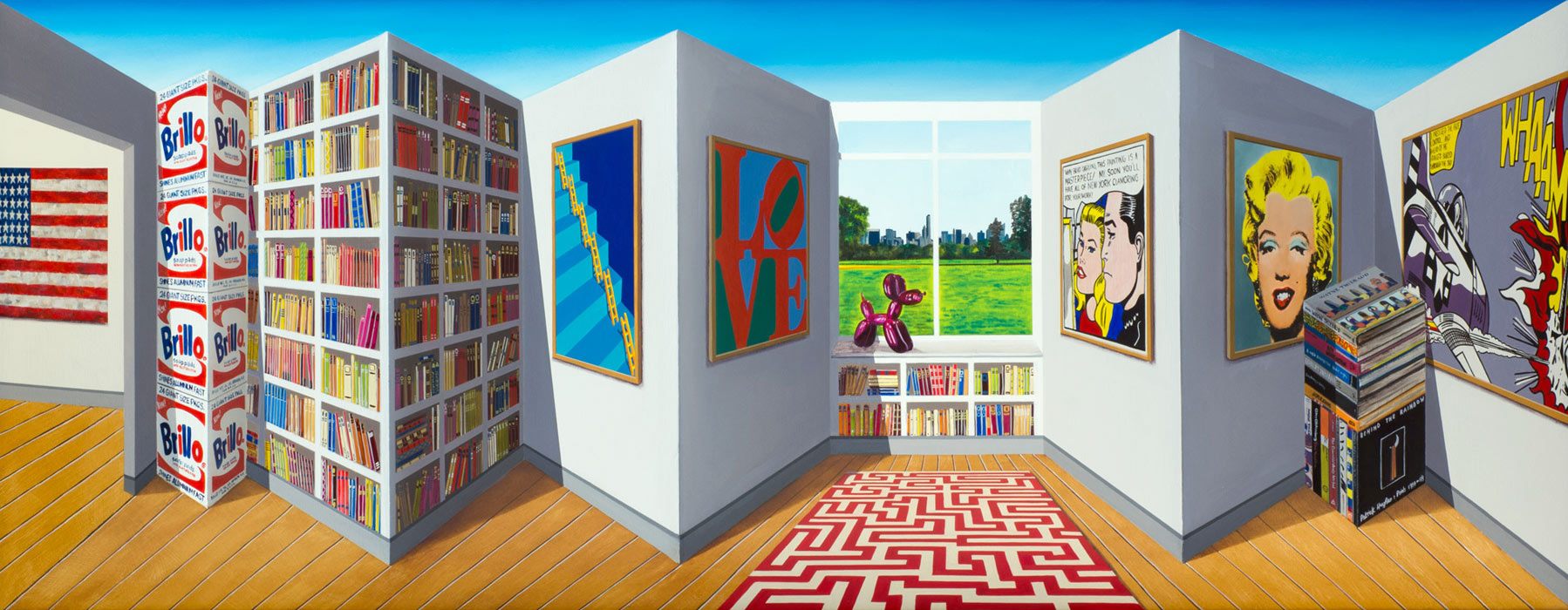 |
| Patrick Hughes Popper |
A perfect example of the way our brains perceive art is
Patrick Hughes’ gallery, “Reverspective,” which offers stunning visual
illusions. Although we know his paintings are two dimensional, we are met with
a disorientating experience because the paintings create the effect of a
3-dimensional space. The brain perceives his work as if there were physical
corridors we could walk through, challenging the way we think about how our
eyes and brain perceives visuals.
 |
| Michelangelo's Expulsion from Paradise |
With the proliferation of new neuroscience
technology such as functional magnetic resonance imaging (FMRI) and
transcranial magnetic stimulation (TMS), neuroscientists have been able to
experiment with how the brain reacts to art. In an experiment involving
Michelangelo’s Expulsion from Paradise,
it was found that the gesture of Adam’s wrist bent back was enough to “excite
areas in the primary motor cortex that controlled the observer’s own wrists”
(Smithsonian).
Aside from how the brain
processes images, artists have also experimented with mind-altering substances
such as cocaine, LSD, and other drugs. In one of the most creative and absurd
experiments I’ve ever heard of, artist Bryan Lewis Saunders decided to take a
different drug every day and create a self-portrait of himself while under the
influence in order to see how his perception of self would change.
Works Cited:
Frazzetto, Giovanni, and Suzanne Anker. "Science and Society - PERSPECTIVES." Neuroculture 10 (2009): 815-21. Nature Reviews. Macmillan Publishers, Nov. 2009. Web.
Hughes, Patrick. "Reverspective." Www.patrickhughes.co.uk. Patrick Hughes, n.d. Web. 17 May 2015. <http://www.patrickhughes.co.uk/gallery/painting/>.
Lucero, LeAnna. "Phrenology." Phrenology. LeAnna Lucero, n.d. Web. 17 May 2015. <https://sites.google.com/site/physiciki/Home/pseudoscience/period-2/phrenology>.
Luxton, Rebecca. "A Man Got High on 52 Different Drugs Then Drew These Trippy Self-Portraits." RYOT News. RYOT, 24 July 2014. Web. 17 May 2015. <http://www.ryot.org/bryan-saunders-self-portraits-drugs/765053>.
Tucker, Abigail. "History, Travel, Arts, Science, People, Places | Smithsonian." Smithsonian.com. Smithsonian Magazine, 1 Nov. 2012. Web. 17 May 2015. <http://www.smithsonianmag.com/science-nature/how-does-the-brain-process-art-80541420/>.
Zeki, Semir. "Statement on Neuroesthetics." Neuroesthetics.org. Neuroesthetics, n.d. Web. 17 May 2015. <http://www.neuroesthetics.org/statement-on-neuroesthetics.php>.
Tuesday, May 12, 2015
Event 1: Hammer Museum
 Over the past two years, I must have walked past the Hammer Museum at least two hundred times without setting foot past the first step into the building. Venturing into the museum to see the exhibits never really crossed my mind. However, I was ecstatic to see the museum on the list of recommended events because it gave me a reason to finally see what I've been missing.
Over the past two years, I must have walked past the Hammer Museum at least two hundred times without setting foot past the first step into the building. Venturing into the museum to see the exhibits never really crossed my mind. However, I was ecstatic to see the museum on the list of recommended events because it gave me a reason to finally see what I've been missing.One of the first things I noticed upon my entrance into the museum were these interesting chairs out in the courtyard. Immediately, I sat down and started spinning around until I was dizzy and felt like I was going to fall over. When I learned that the chairs were part of the Provocations exhibit by the Heatherwick Studio, I knew it had to be the first one I visit.
Provocations: The Architecture and Design of Heatherwick Studio features a variety of innovative design concepts ranging from small products, such as the chairs above, to large architectural projects. The Heatherwick Studio began each project with a question, such as "Can a rotationally symmetrical form make a comfortable chair?" before designing a prototype in an attempt to answer the question. In creating the spinning chairs, titled Spun, the studio considered ergonomics and geometric shapes to design a chair that could be made using metal spinning techniques. The entire exhibit is an example of the intermingling of math, science and art.
I also visited The Catch by Lauren Bon and Metabolic Studio. The exhibit is based on Lauren Bon's interest in figuring out "how to retain our water and how to send the rest of it out to the sea cleaner" (Bon). The exhibit featured a droning sound with heavy bass which created ripples in the water. The light above the bowl of water in tandem with the ripples created a shadow resembling flowing water. Lauren Bon's The Catch incorporates science by using light and vibration to turn the bowl of water into a lens.
I definitely would recommend the Hammer Museum to anyone. I felt as though I was able to appreciate the exhibits at the museum much more because of the topics covered in this course. I was able to identify the interactions of a variety of disciplines with art through the recommended exhibits.
Works Cited:
[1] Agsten, Allison. "Lauren Bon's "Devices of Wonder" - Hammer Museum." The Hammer Museum. The Hammer Museum, 31 Mar. 2015. Web. 12 May 2015. <http://hammer.ucla.edu/blog/2015/03/lauren-bons-devices-of-wonder/>.
[2] "Hammer Museum: Photo Credit: Http://hammer.ucla.edu/about/museum_board_and_staff.html." UCLA Life Blog. UCLA, 07 Mar. 2012. Web. 12 May 2015. <http://blog.admissions.ucla.edu/2012/03/07/what-happens-when-800-degrees-meets-the-hammer-museum/hammer-museum-photo/>.
Sunday, May 10, 2015
Week 6: Biotechnology and Art
The intersection of biotechnology
and art has raised many ethical and social issues over the last decade and a
half. Through this week’s lecture, I learned that many artists have entered the
laboratory to create art by manipulating live tissue, microorganisms, and life
processes. These artists raise the question of whether or not we can consider
life itself as an art form.
An example of the cross between art and biotechnology is
Eduardo Kac’s Green Fluorescent Protein (GFP) Bunny, Alba. Under blue light, the
bunny glowed with a bright green light. Kac was able to achieve this
illumination by inserting a synthetic mutation of the green fluorescent gene
found in jellyfish into the albino bunny through zygote microinjection (Kac). This
was a piece of transgenic art, a new art form based on genetic engineering to
transfer synthetic genes into natural beings.
Eduardo Kac’s project reminded me of the idea of “designer
babies,” in which parents could select their baby’s traits, prevent diseases,
and enhance athleticism and intelligence (Ghose). In April of this year, a team of Chinese
scientists were actually able to successfully edit the genes of a human embryo
for the first time. They were able to “modify the gene responsible for … a
potentially fatal blood disorder, using a gene-editing technique known as
CRISPR/Cas9” (Cyranoski). This success has led to ethical debates on how genome
modification may affect have an unpredictable effect on future generations
because they are inheritable.
Although I understand the motives for human
genome modification, I personally find the process unethical. I believe the
natural process of pregnancy and birth is why humanity is beautiful and a
natural work of art. The process seems to be on par with plastic surgery in
which we are attempting to converge on the “ideal” child and person by
selecting traits deemed “dominant” in society.
Another example of biotechnology and art is Edward Steichen's Delphiniums, which he cross bred and genetically modified to create extremely aesthetic hybrids (Hartmann). Learning about the delphinium's made me realize that my dog, Max, is a personal example of hybridization. He is part Dachshund and part Golden Retriever.
Works Cited:
Cyranoski, David, and Sara Reardon. "Chinese Scientists Genetically Modify Human Embryos." Nature.com. Nature Publishing Group, 22 Apr. 2015. Web. 10 May 2015. <http://www.nature.com/news/chinese-scientists-genetically-modify-human-embryos-1.17378>.
Ghose, Tia. "Children to Order: The Ethics of 'Designer Babies'" LiveScience. TechMedia Network, 13 Mar. 2014. Web. 10 May 2015. <http://www.livescience.com/44087-designer-babies-ethics.html>.
Goodman, John. "Are Designer Babies Ethical?" Are Designer Babies Ethical? National Center for Policy Analysis, 10 Oct. 2013. Web. 10 May 2015. <http://healthblog.ncpa.org/are-designer-babies-ethical/>.
Kac, Eduardo. "GFP BUNNY." GFP BUNNY. Eduardo Kac, n.d. Web. 10 May 2015. <http://www.ekac.org/gfpbunny.html#gfpbunnyanchor>.
Laurent, Anna. "Art & Botany: Edward Steichen's Delphiniums." Garden Design. Garden Design Magazine, n.d. Web. 10 May 2015. <http://www.gardendesign.com/ideas/art-botany-edward-steichens-delphiniums>.
Vesna, Victoria, narr. “BioTech Art Lectures I-V.” N.p., . web. 5 Nov 2012.
Sunday, May 3, 2015
Midterm Project
Here is the link to my midterm project:
https://drive.google.com/file/d/0BwBpFnjRdXLpX25qOXV2NHlFazg/view?usp=sharing
https://drive.google.com/file/d/0BwBpFnjRdXLpX25qOXV2NHlFazg/view?usp=sharing
Saturday, April 25, 2015
Week 4: Medicine + Technology + Art
After watching this week’s lectures, I understand how art
has influenced medicine and technology (Med Tech) and vice versa. They have
grown hand-in-hand dramatically since World War I, although reconstructive surgery
and studies of anatomy date as far back as the Egyptians and Ancient Greeks.
Today, we see the intersection of medicine and art through the use of MRI’s and
CT scans, which take pictures of the human body to help doctors diagnose patients
without any invasive procedures.
Dictionary.com defines the term medicine as the “art or science of restoring or preserving health…
by means of drugs, surgical operations or appliances, or manipulations.” The term
is derived from the Latin ars medicina
which means the art of healing. This
definition even extends to the Hippocratic Oath, which represents the “ideal
conduct for the physician” abides by this definition, and even synonymously
replaces the word “medicine” for “art” in many places.
“In purity and holiness I
will guard my life and my art.”
It makes sense then, that you can improve the patient
experience by including art. One example of the intersection between art and
medicine technology is the practice of music therapy. Music therapy is an
established health technique in which music is used “to address physical, emotional, cognitive,
and social needs of individuals” (American Music Therapy Association). In patients with dementia, a
disease associated with loss of cognitive functions such as decision making and
judgment, music therapy has been able to reduce aggressive behavior and improve
cooperation with daily tasks. Patients with autism have shown increased
interest and response when practicing verbal and nonverbal communication skills
to music.
Another example of an artist influenced by MedTech is Orlan,
a French artist who’s art gallery was an operating room where she would undergo
plastic surgery while reading philosophical literature. Orlan commented on the
idea of physical beauty by undergoing 9 surgeries to recreate the beauty of
renowned paintings (Akman). She took the forehead of Da Vinci’s Mona Lisa and chin of
Boticelli’s Venus among other works.
Much of my time taking art classes in high school revolved
around drawing the human body from live subjects, so I understood how medicine has played a role in art. However, it was only after this week’s lecture did I learn
that art and science are interdependent but inseparable.
References:
Akman, Kubilay. "Surets of Orlan." Izinsiz Gosteri. Izinsiz Gosteri, 11 Apr. 2005. Web. 25 Apr. 2015. <http://www.izinsizgosteri.net/asalsayi37/Kubilay.Akman_ing.37.html>.
"American Music Therapy Association." FAQ's. American Music Therapy Association, n.d. Web. 25 Apr. 2015. <http://www.musictherapy.org/faq/#267>.
Judd, Ryan. "How Does Music Therapy Benefit Children with Special Needs?"YouTube. YouTube, 1 Apr. 2013. Web. 25 Apr. 2015. <https://www.youtube.com/watch?v=wXcmWwSQGI4>.
"Medicine." Wikipedia. Wikimedia Foundation, n.d. Web. 25 Apr. 2015. <http://en.wikipedia.org/wiki/Medicine>.
Rae, Charlotte. "Charlotte Rae." Cambridge Neuroscience. University of Cambridge, n.d. Web. 25 Apr. 2015. <http://www.neuroscience.cam.ac.uk/directory/profile.php?clr50>.
Tyson, Peter. "The Hippocratic Oath Today." PBS. PBS, 27 Mar. 2001. Web. <http://www.pbs.org/wgbh/nova/body/hippocratic-oath-today.html>.
Ulbricht, Catherine. "Music Therapy for Health and Wellness." Psychology Today: Health, Help, Happiness + Find a Therapist. Natural Standard, 21 June 2013. Web. <http://www.psychologytoday.com/blog/natural-standard/201306/music-therapy-health-and-wellness>.
Sunday, April 19, 2015
Week 3: Robotics and Art
In this week’s lecture, Professor Vesna once again shows how
art can be applied to disciplines otherwise regarded as completely irrelevant to
art itself. The lecture raised several questions that piqued my interest and
guided my understanding to how robotics and art intertwine. How do artists use mechanization in their
work?
One of the earliest examples of technology and science
merging with art traces back to the invention of movable type and the printing
press. These breakthroughs changed the way people would see the world by
introducing mass reproducibility and ushered in the Enlightenment and
Scientific Revolution (Vesna, 2015).
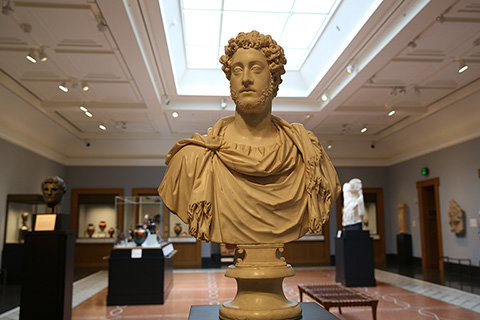 |
| Reproduction of Hadrian Bust |
Through the lens of Walter Benjamin, however, the age of
Mechanical Reproduction has caused art to lose its uniqueness and authenticity,
its “aura” and “its presence in time and space, [and] its unique existence at
the place where it happens to be” (Benjamin 2). While I understand Benjamin’s opinion,
I believe the reproducibility of original pieces has allowed the masses to
develop a newfound appreciation for art by making original pieces more
accessible around the world. Personally, I found an interest in Greek and Roman
art and architecture only because I was able to see pictures in my classes and
reproductions at the Getty Villa in Malibu.
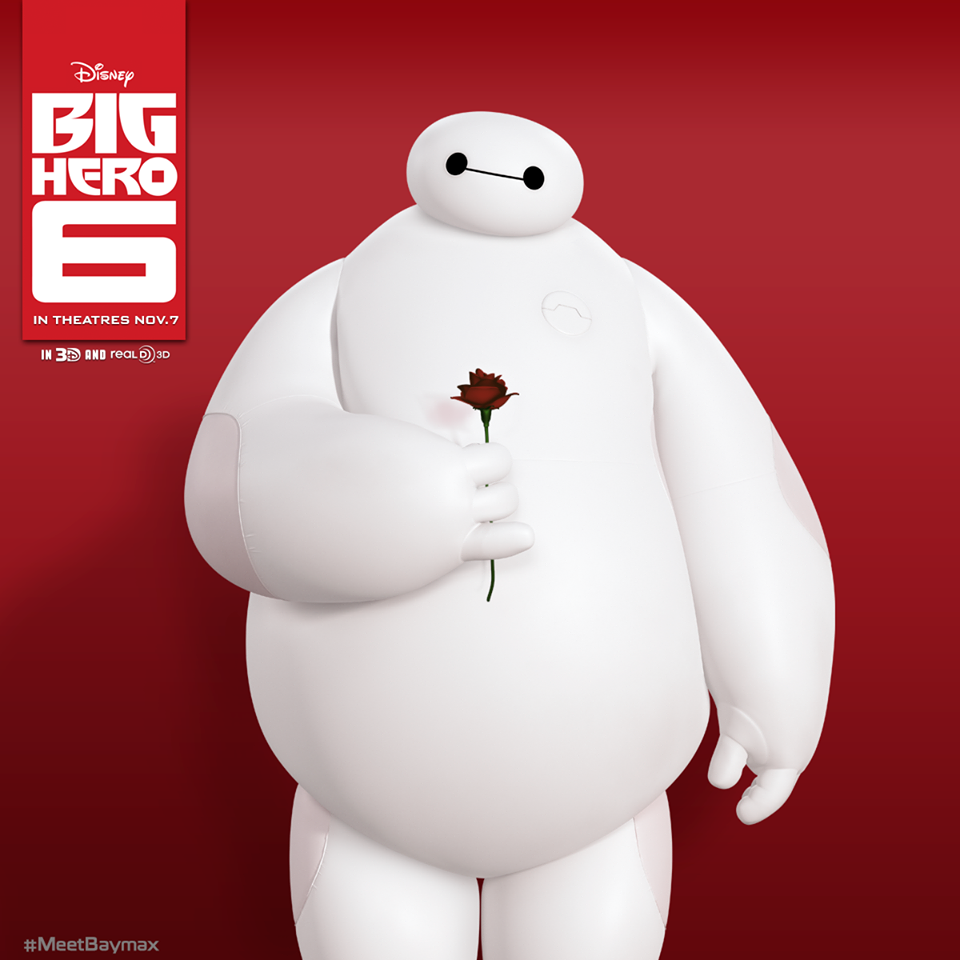 |
| BayMax from Big Hero 6 |
Mechanization opened up possibilities and venues for the
arts and science to come together in unprecedented ways. The idea of robots was
born out of the mechanization of labor and has become a popular theme in many
forms of art today. For example, the animated movies Big Hero 6 and Wall-E utilize
robots and portray them as conscious beings. These movies follow the Japanese
portrayals of robots as human friends as opposed to the American portrayals of
robots as invasive inventions as described by Professor Kusahara (Kusahara, 2015).
Another clear example of the intersection between science,
math and art is through Dr. Mari Velonaki’s Diamandini statue, which was
installed at the Victoria and Albert Museum in London. The Diamandini statue’s
primary goal was to gather data on how visitors of the museum interacted with
the installations and attempt to make an emotional connection to engage with
humans (Lim, 2013).
These examples show how art and science are converging in
today’s society and are tell-tale signs of how they may be associated with one
another in the future.
References:
1. "Art | Getty
Villa." The J. Paul Getty in Los Angeles.
Http://www.getty.edu/. Web. 19 Apr. 2015. <http://www.getty.edu/visit/villa/art.html>.
2. "Baymax/Gallery." Disney
Wiki. Http://disney.wikia.com/. Web. 19 Apr. 2015.
<http://disney.wikia.com/wiki/Baymax/Gallery>.
3. Benjamin, Walter. The Work of Art in Age of Mechanical Reproduction. Marxists. 1936. N.p. Web. 19 Apr 2015.
<http://www.marxists.org/reference/subject/philosophy/works/ge/benjamin.htm>.
4. Lim,
Angelica. "What Roboticists Can Learn From Art, and What Artists Can Learn
From Robots." IEEE Spectrum. N.p., n.d. Web. 02 July 2014.
<http://spectrum.ieee.org/automaton/robotics/diy/what-roboticists-can-learn-from-art>.
5. Vesna, Victoria. “Robotics
MachikoKusahara 1." Cole UC online. Youtube, 14 April 2012.
Web. 19 April 2015.
https://www.youtube.com/watch?t=137&v=xQZ_sy-mdEU
https://www.youtube.com/watch?t=137&v=xQZ_sy-mdEU
Sunday, April 12, 2015
Mathematics and Art
Although many consider math and art to be polar opposites, they
are actually deeply intertwined. For example, the Greeks used the aesthetically
appealing Golden Ratio of 1 to 1.618 in their architecture, such as the
Parthenon. And Piet Mondrian's belief in mathematics and simple geometric
shapes inspired him to paint the universe at its simplest form, using
horizontal and vertical lines and basic colors. Math has played a pivotal role
in the evolution of art throughout history and is an art in and of itself as
well, as the study of numbers, abstractions, measurements, and generalizations
using signs, symbols and calculations.
Piero de la Francesca's famous book states that painting has three
principal parts: drawing, proportion and coloring. Proportion is the most
important of the three and is also known as perspective. In Marc Frantz’s
lesson on vanishing point, he explains how artists use geometry and vanishing
points to create one-point and two-point perspectives in their paintings. Artists
like Giotto and Brunelleschi used geometry to control the position of the
spectator within their paintings and properly paint objects to scale.
Another example of how mathematics has influenced art is
through origami. Robert Lang explains how art, math, and science intersect in
his TED talk titled “The math and magic of origami.” Lang shows how geometric
shapes drawn on square paper can be folded to produce animals and people.
What helped me
understand math’s influence on art the most was the Golden Ratio, which
mathematically represents the idea of beauty. Leonardo da Vinci’s drawing Vitruvian Man utilized the ratio to show
the perfect proportions of the human body that maximized aesthetics. Jimmy
Ruska shows how aesthetically appealing the golden ratio is by applying it to
the faces of celebrities who are widely considered attractive.
The juxtaposition of mathematics, art and science occurs
because people are taught that they are unrelated to each other early on. This
can be seen in the education system, where some students will major in art or
in mathematics or science, and will hardly ever touch classes in the other
subjects. However, I believe the use of computers by animators to develop creative works such as movies will help each subject converge.
References:
Chaney, Candace. "Art Exhibit Offers a New Way of Looking at Math." Kentucky.com. Www.kentucky.com, 14 Feb. 2013. Web. 12 Apr. 2015. <http://www.kentucky.com/2013/02/14/2516568/exhibit-offers-a-new-way-of-looking.html>.
Frantz, Marc. "Lesson 3: Vanishign Points and Looking at Art." 1 Jan. 2000. Web. 9 Apr. 2015. <Http://www.cs.ucf.edu/courses/cap6938-02/refs/VanishingPoints.pdf>.
Lang, Robert. Robert Lang: The Math and Magic of Origami.YouTube. YouTube, 31 July 2008. Web. 12 Apr. 2015. <https://www.youtube.com/watch?v=NYKcOFQCeno>.
Nicoles, Nia. "Linear and Arerial Perspective." Nias Specialist Contextual Investigation. WordPress, 18 Mar. 2014. Web. 12 Apr. 2015. <https://nianicolesw.wordpress.com/2014/03/18/linear-and-arerial-perspective/>.
Ruska, Jimmy. Golden Ratio- The Perfect Face & Change the Sex of People. YouTube. YouTube, 23 July 2007. Web. 12 Apr. 2015. <https://www.youtube.com/watch?v=GO3o9drC1mQ>.
Wander, Rodrigo. "Origami." Origami. Minhateca, n.d. Web. 12 Apr. 2015. <http://minhateca.com.br/Rodrigowbs/BR+DeepWeb/Apostilas/Apostilas+de+Japon*c3*aas/Origami>.
Sunday, April 5, 2015
Week 1: Two Cultures
The idea of "two cultures"
was introduced by C.P. Snow in his 1959 lecture at Cambridge University. He
first became aware of the dichotomy while working with literary intellectuals
and natural scientists who were "comparable in intelligence, identical in
race,[and] not grossly different in social origin," yet never communicated
with each other. After reading Snow’s lecture and watching the “Changing
Education Paradigms” video, I realized how much of an impact the two cultures
have had on my life.
I agree with Snow’s viewpoint
on how schools have fostered the gap between the arts and sciences. Specifically
at UCLA, there is a physical separation between the arts and humanities majors
in North Campus and engineering and science majors in South Campus. By
separating the arts and sciences geographically, UCLA is perpetuating the two
cultures by limiting interactions between students studying either subject. The
Royal Society of Arts (RSA) considers this system an “epidemic” and suggests
that western education is archaic because it emphasizes segregation between
different fields instead of stressing similarities.
Bohm’s essay “On
Creativity” proved to me how similar scientists and artists really are, driving
home the idea that the arts and sciences should not be separate. Bohm commented
that artists and scientists “all feel a fundamental need to discover and create
something new that is whole and total, harmonious and beautiful” (Bohm 138). His perspective has convinced me to discard
the traditional views of scientists as being more analytical and linear and see
them as artists within a different discipline.
With this new point of
view, I can see a “third culture” emerging where the line between art and
science is blurred; especially with UC students having to take courses outside
of their major’s curriculum. If it weren't for this requirement, I would have
never found an interest in archaeology and human biology.
References:
1. Bohm, David, and Lee Nichol. On
Creativity. Vol. 1. London: Routledge, 1998. 137-149. Print.
2. Changing Education Paradigms. By Ken Robinson,
Sir. Youtube. Royal Society of Arts – RSA Animate, 14 Oct. 2010. Web. <https://www.youtube.com/watch?y=zDZFcDGpL4U>.
3. Krauss, Lawrence. "An Update on C. P. Snow's "Two Cultures"" Scientific American Global RSS. Scientific American, 17 Aug. 2009. Web. 06 Apr. 2015. <http://www.scientificamerican.com/article/an-update-on-cp- snows-two-cultures/>.
4. Snow, Charles Percy. “The Two Cultures and the Scientific Revolution.” The Rede Lecture. Cambridge University, Cambridge, Massachusetts. Lecture.
5. Tritipeskul, Sirinya. "And the Winner of the North vs. South Campus Challenge Is....ALL Bruins!" UCLA Fund. UCLA Fund, 22 May 2013. Web. 06 Apr. 2015. <http://www.theuclafund.ucla.edu/news/nvschallengewinner.aspx>.
Subscribe to:
Comments (Atom)















